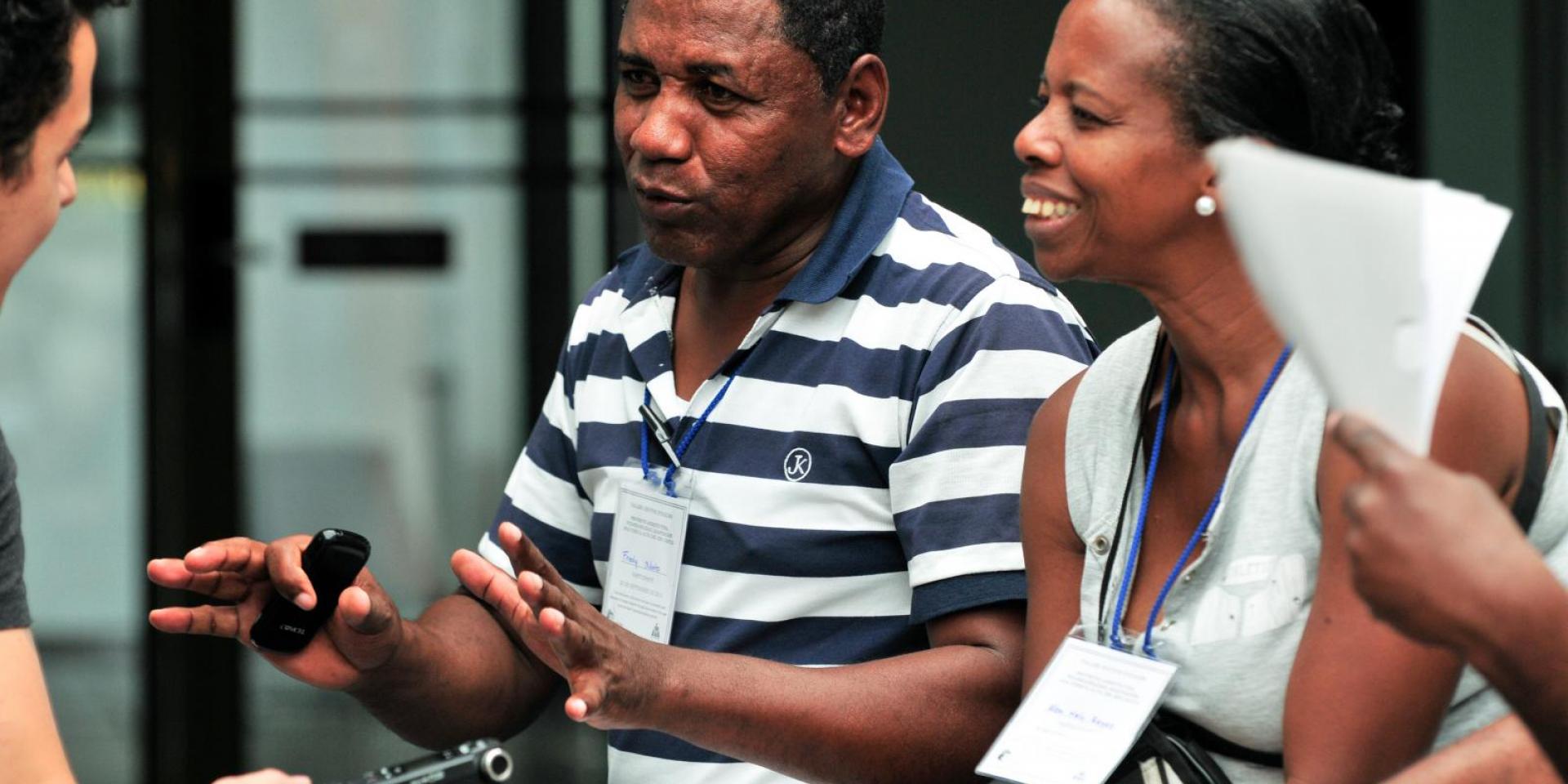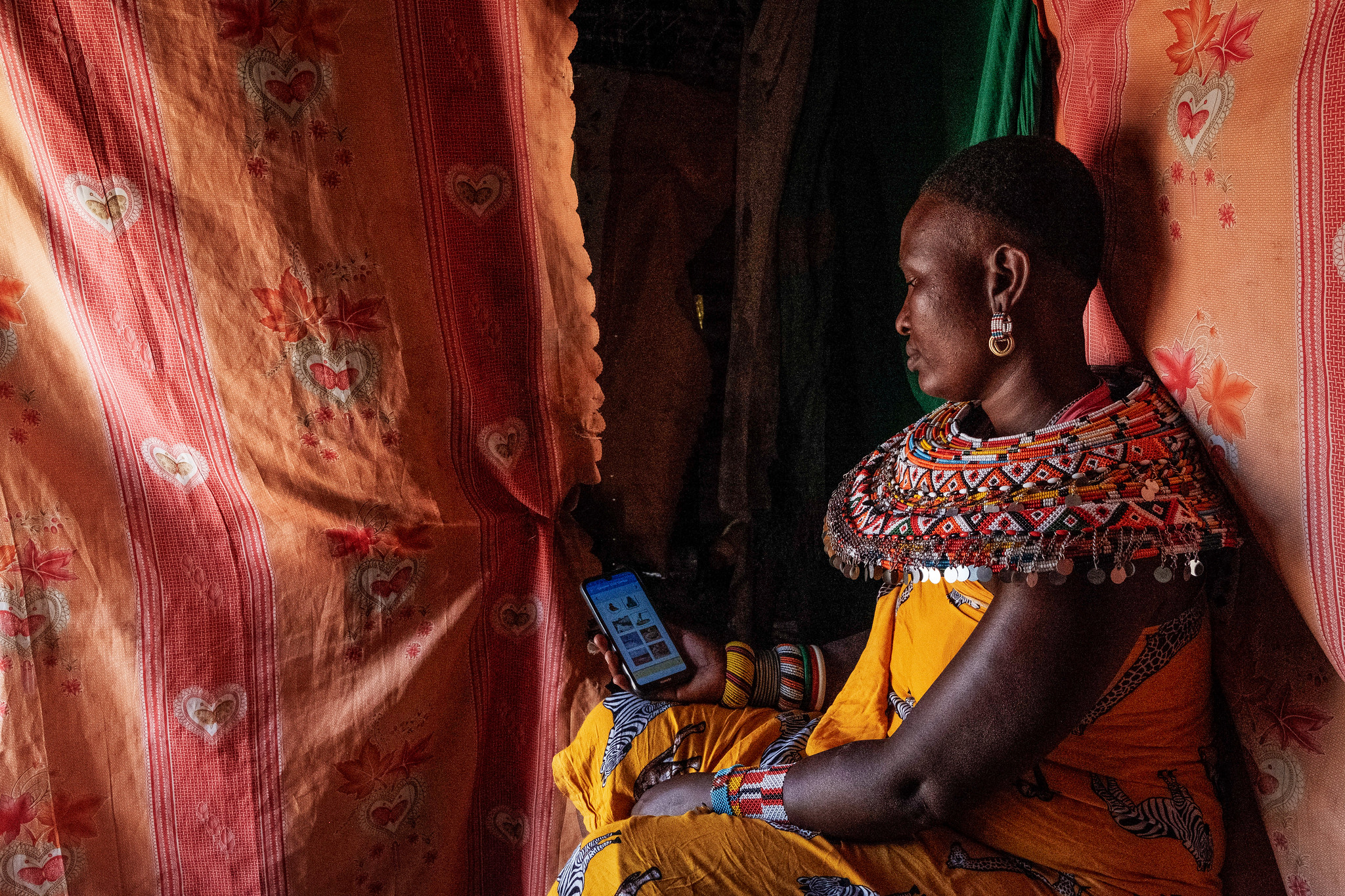New toolkit amplifies inclusive innovation: user research can boost gender-responsive design
 Photo: Neil Palmer (CIAT).
Photo: Neil Palmer (CIAT).
However, what has been challenged is the inclusivity of the benefits of this global digital transformation for traditionally marginalized groups. Even the most successful digital tools have fallen short of fulfilling their promises for (especially rural) women, who are held back by the lack of access to mobile devices, digital literacy, or focus on the development of innovations supporting farming practices in which women are not involved.
Gender-sensitive innovation design thus would be a great step toward a more inclusive digital transformation. A prime factor to bridge the technical digital divide is to design and develop tools with a clear benefit for rural women.
CGIAR scientists reflected on barriers in developing more gender-inclusive digital solutions in agriculture and synthesised the challenges:
- Inclusion is often an afterthought: Institutions often approach innovation from a technology-driven perspective, instead of building around the real needs of their future users. This includes failing to properly consider the different media habits, interests and use-case scenarios of women and men in agriculture.
- There is no disaggregated data available for data-driven decision-making in innovation design. Aggregated data fails to represent the specific needs of women, men, young or old people, and rural communities. In addition, the informative value of survey-based data about the needs of marginalized groups is often questionable, because of numerous biases in data collection.
- In collaborative project teams, different stakeholders often have their own user groups in mind, which can lead to generic, one-size-fits-all solutions. To be serious about building innovations for marginalized communities, the different stakeholders involved need to be coordinated in how they create content, develop technologies, and own products. Teams need to work with a sole source of ‘truth’ regarding the goal they want to achieve with their solution.
- Targeted communities are rarely involved early, when the research and design challenge is framed; more often, they are mainly receivers of the already-built solution. This often leads to their low ownership and interest in the tools developed.
But how will User Research help in practice with challenges in inclusive design?
User research is a combination of quantitative and qualitative methods to collect information about current or potential users of a product or service to understand their needs, persistent problems (pain-points), motivations and behaviors. User research offers an effective selection of tools to address the challenges around inclusive design practices outlined previously.
- Start with the needs and risks of exclusion for your users. User Research offers several mapping methods that teams can apply at the early stage of their innovation design (Experience Maps) or to evaluate existing products (User Journey). Besides mapping experiences that your current or future users have with your product, it is important to understand their frustrations, interests and habits. How do they talk about it, and what solutions do they like currently? A User Persona is a great way to build different profiles—not based on age or income, but on needs and motivations. Special needs and aspirations of women can be highlighted and addressed, for example, by choosing a different channel for communication, or by offering extra support to overcome gender-specific barriers. For example, CGIAR worked with User Personas to understand differentiated needs of crop breeders in Tanzania.
- Get better data for decision-making using a mixed-methods approach and consciousness about bias. A careful combination of quantitative data analysis, like Digital Ecosystem Analysis, and qualitative data collection, like targeted User Interviews, can provide insights on how to formulate meaningful survey questions to understand the point of view of women (among other users). uxtools4Ag sheds light on relevant bias in field research, data analysis, and recruiting (Bias Overview). For example, steps toward user-centred field research opened up new perspectives on fertilizer use in Ethiopia.
- Build teams around user research to create buy-in for meaningful design processes. Jointly discussing assumptions and ways to verify them in a user research plan is a great way to involve representatives from various groups in research activities (partners, designers, developers, community leaders, etc.), because it fosters trust and understanding among stakeholders. With results in hand, Operationalizing Insights as a team creates a common ground for working toward the same goal and output with a clear user needs map in mind. As an example, uxtools4Ag and human-centred design practices helped foster trust among the stakeholders of an open content database for agricultural topics in Nigeria.
- Begin inclusiveness early during the design processes, and see heightened ownership and improved targeting. By involving users early on in the design and research (via, for example, Diary Studies or Usability Testing with real prototypes), user research can empower women to actively participate in framing problems and designing solutions, ensuring that their voices are heard and respected. This involvement not only ensures more relevant and impactful solutions, but also promotes a sense of ownership and empowerment.

A Samburu mother from Northern Kenya uses the Mbiotishio nutrition mobile app in her home, Kenya, that provides two-way exchange of nutrition information. The app is being used in sentinel zones as part of the KAZNET data platform that gathers field data on nutrition to ground-truth satellite data on drought conditions. Photo ILRI/Kabir Dhanji
The uxtools4Ag has tools to help deliver better research results
The CGIAR User Research Toolkit (uxtools4Ag) was developed in close collaboration with CGIAR researchers as a simple and user-friendly resource for learning about different user-research methods.
The CGIAR User Research Toolkit (uxtools4Ag) offers:
- guidance for project implementers on how to collect better data, communicate and operationalize their insights, and design tailor-made solutions for specific target groups
- quick overviews of distinctive methods to help researchers plan for user research when designing interventions. The toolkit gives short profiles for each method, offering estimations of effort and team requirements to improve researchers’ planning
Along the four research phases of plan, explore, explain and evaluate, the toolkit offers overviews, as well as step-by-step instructions and a wide range of examples from practice. Whether you are planning your research on innovations and looking for a quick overview on available methods and necessary resources, or you are implementing user research and looking for dos and don’ts and some practical advice, uxtools4Ag provides guidance and ample resources for further learning.
“User research is a game changer to address many inclusive design challenges”
Gender-inclusive design means no one-size-fits-all solutions. User-research methods can help identify different needs-based groups which would have been subsumed within a wider ‘target audience’, and discover risks for exclusion early on. Acting on these insights requires data to argue for time, resources and the opportunity to make mistakes and learn from them.
Stakeholder integration stands and falls with the quality of method application—even simple interviews can have a wide range of pitfalls and situations to navigate that can make the difference between useful fieldwork and meaningless confirmation of assumptions (or even stereotypes).
uxtools4Ag can help you deliver better research, and make the results count for your design and implementation decisions—all to develop more inclusive innovations.
If you have questions or comments, please reach out to us! We look forward to receiving questions and requests related to your gender-inclusive work.
Acknowledgements
This work was supported by two CGIAR initiatives: Excellence in Agronomy, and Digital Innovation. CGIAR is grateful for the support of CGIAR Trust Fund contributors: www.cgiar.org/funders